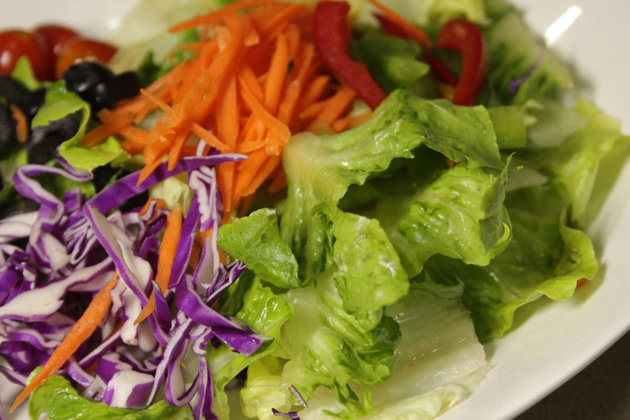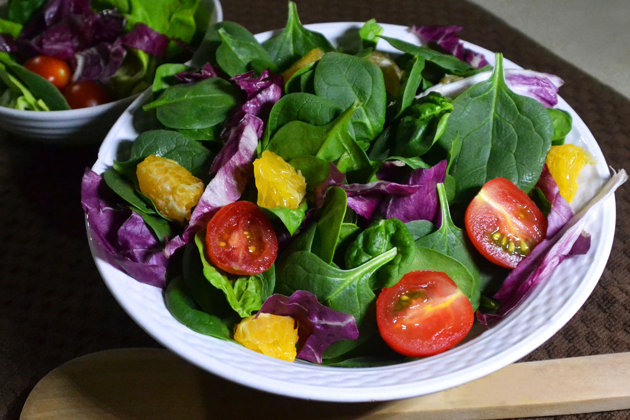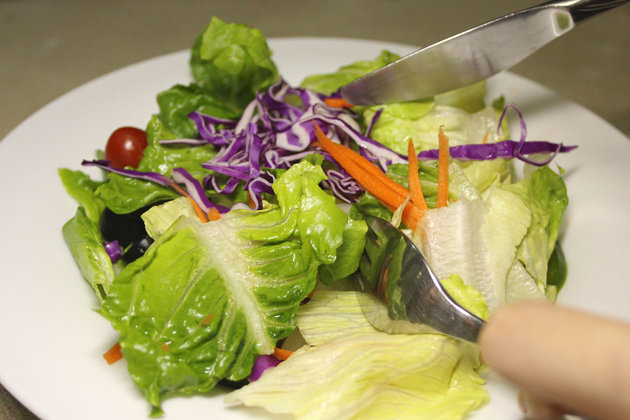
To Cut or Not To Cut?
By Jade Hu - Friday, Apr 11, 2014
It’s like a Seinfield show – when they question if you should eat a bar of chocolate with knife and fork. But in this case it is about whether or not to cut up our salads – and eat like a rabbit or a horse. There are a few learned myths going around – would chopping up the salad greens cause them to go brown, and does it destroy cells in the leaves and hence result in a bitter taste? We poke around to see what salad makers, green grazers, and a food scientist, have to say.
To Muhd Haikal Nekla, operations executive at Platypus Kitchen – known for their upmarket deluxe salads – it is all about personal preference. “For fine dining, it’s better to cut into bite-sized pieces, but for a casual setting, just go ahead and stuff it in your mouth.” When serving salad takeaways in the hectic CBD area to people who eat and run, there’s no time for them to think about cutting their salads. Moreover, since Platypus Kitchen offers only spoons and forks, it’s a no-brainer – there won’t be any cutting involved here.

Chef Dylan Ong of Saveur has heard of the myth but dismissed it quickly, “Whether it’s true or not doesn’t matter if you serve it straight away. Also, it’s up to the chef’s preference.” To cut or not to cut often depends on the dish itself. For example, cutting is required when making a Caesar salad to respect the original nature of the dish, but a more creative dish like tuna salad, the chef can choose to wrap the tuna using whole lettuce leaves, omitting the knife altogether. “It’s more about the nutrients being exposed to the air, not so much about the knife.”

Dr. Liu Mei Hui, a lecturer at the Food Science & Technology Programme in National University of Singapore shed some light from the scientific perspective, “Using our hands to break the vegetables into small pieces usually causes less damage to the plant cells (as opposed to using a knife). When there is more cell damage, more contents of the cell are released, some of which would increase the browning of the greens and leave a less palatable taste, after reacting with oxygen. The ‘contents’ would also be released when we chew our greens in our mouths.” Basically, as long as the salad is consumed immediately upon preparation, it doesn’t matter if we use a knife or not.
How about those on the receiving end? “I’m a gobbler; I just stuff everything in my mouth. Never cut a salad in my life”, said Jo Ng, video editor. Jeffrey Morales, an IT engineer, said, “I don’t remember having to cut my salad, I just mix everything and eat it… also the salad is usually already bite-sized.” Manuel Blank, a student in molecular biology, “I’ve never heard that you shouldn’t cut salad with a knife before. Plus, I believe you can definitely still eat salad when it’s gone brown. It would probably make a difference in taste, though.”
As a rule of thumb, the finer you chop your leafy vegetables and the longer you wait before you consume, the more likely you would lose texture, freshness, crunchiness, flavours and nutrients. You also risk the leaves turning brown through the oxidization process, especially if you leave them out in the open for more than a few hours. So if you are making your own salads and eating it right away, go ahead and give the greens a good knifing. How else are you going to stuff that heaping portion of rabbit feed into your mouth?]



